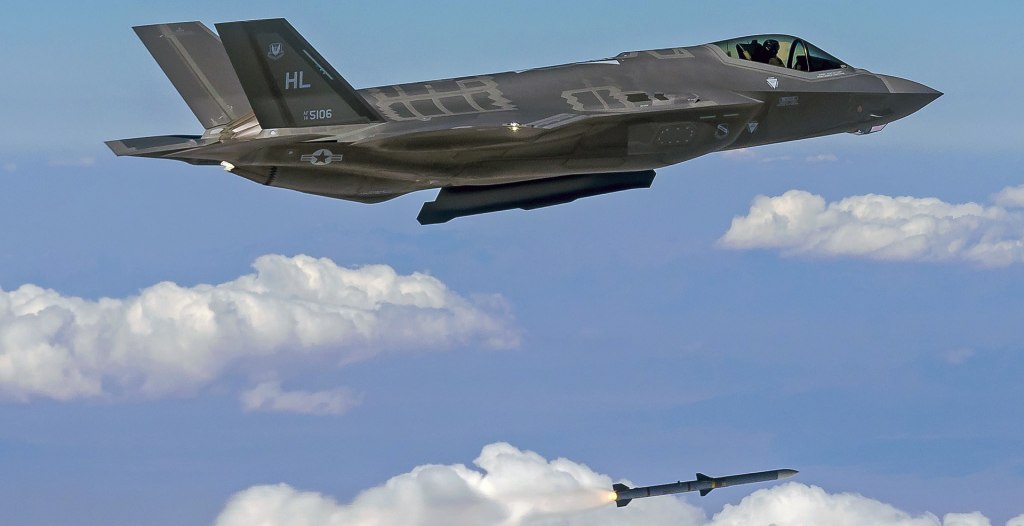Used against terrestrial targets, missiles that stay in the atmosphere and the major part of the path is flown at an approximately constant speed, is termed cruise missile.
Categorized by speed, size, range, launching area such as air/ land/ submarine/ surface ship, cruise missiles are divided into six types. The categories of cruise missiles are Hypersonic, Supersonic, Intercontinental-range Supersonic, Long-range Subsonic, Medium-range Subsonic, Short-range Subsonic.
Presently there are many supersonic cruise missiles in the world, many are still in the development stage. In this article, you will get to know about the fastest cruise missile in the world and also get information about some of the fastest hypersonic missiles in the world. So, let’s waste no more time and scroll down to know all about these missiles.
Also Read: Earn While You Learn Scheme: Key Takeaways for Your UPSC Preparation
Fastest Supersonic Cruise Missile in the World
Presently, the BrahMos missile is the fastest supersonic cruise missile in the world which is designed and developed to be launched from ships, aircraft, land or submarine. India and Russia is jointly engaged in the development of the BrahMos missile. This is also the fastest cruise missile in the world.
The BrahMos Aerospace was formed by India’s DRDO and Russian Federation’s NPO Mashinostroyeniya. The name “BrahMos” was formed by joining the names of two rivers of India and Russia; Moskva of Russia and Brahmaputra of India.
#On 12 June 2001 from the Integrated Test Range (ITR), the Chandipur BrahMos missile was first test-fired. It was the surface-to-surface variants.
#The first test-firing of the submarine-launched variant of Brahmos took place on 20 March 2013 from a submerged pontoon near Visakhapatnam at the coast of the Bay of Bengal.
#Against a sea-based target in the Bay of Bengal from a Sukhoi-30MKI, BrahMos-A, the air-launched variant was successfully test-fired for the first time on 22nd November 2017.
What is a Hypersonic Missile?
A missile travels at Mach 5 or higher, which is five times faster than about 1 mile per second or the speed of sound (3836 mph). Some missiles, such as Russia’s planned Kh-47M2 Kinzhal air-launched ballistic missile, are said to be capable of Mach 10 (7672 mph) speeds with ranges of up to 1200 miles.
The US Tomahawk cruise missile, which is the go-to long-range missile weapon for the US Navy and the Royal Navy, is subsonic, travelling at roughly 550 mph and covering a maximum range of around 1500 miles.
What is Hypersonic Cruise Missile?
This missile reaches its target with the assistance of a high-speed jet engine that permits it to fly at speeds exceeding Mach-5. It’s non-ballistic, in contrast to standard Intercontinental Ballistic Missiles (ICBMs), which rely on gravitational forces to reach their target.
Also Read: Gig Economy: Important Pointers & Much More for UPSC Notes
What is Hypersonic Glide Vehicle?
Re-entry vehicles are used in this sort of hypersonic missile. The missile is launched into space on an arching trajectory, after which the warheads are released and descend at hypersonic speeds towards the atmosphere.
Rather than relying on gravitational forces to deliver the payload, as is the case with traditional ICBMs, the warheads are attached to a glide vehicle that re-enters the atmosphere and, thanks to its aerodynamic shape, can ride the shockwaves created by its own lift as it exceeds the speed of sound, giving it enough speed to overcome existing missile defence systems.
The glide vehicle glides through the atmosphere between 40 and 100 kilometres above ground level, relying on aerodynamic forces to get to its destination.
Fastest Hypersonic Missiles in the World
Presently there are only three hypersonic weapons in the world that are soon to be put in service. Hypersonic missile countries like Russia, China and the USA are constantly working on this technology and recently India also joined the league by successfully test-firing HSTDV.
World’s Fastest Cruise Missile List:
#3M22 Zircon Missile
#Shaurya Missile
#BrahMos II
Which Country Has Hypersonic Technology?
The United States, China, and Russia have the most sophisticated capabilities, while France, India, Germany, Japan, Australia, and North Korea, which claims to have launched a hypersonic missile, are all exploring the technology.
Russia’s Avangard is a glide vehicle that will purportedly carry a nuclear payload and will be fired from an intercontinental ballistic weapon.
China: Over the summer, its military may have completed two hypersonic weapons tests, including the launch into space of an orbiting hypersonic weapon capable of carrying a nuclear payload. The DF-17, a medium-range ballistic weapon designed to deliver hypersonic glide vehicles, has undergone several successful tests in China.
The US Navy is leading the development of a glide vehicle that can be used by all arms of the military, while the Air Force is working on an air-launched glider.
India: The Defence Research and Development Organization (DRDO) and the Indian Space Research Organization (ISRO) have both developed and tested technologies.
India’s Development in Hypersonic Technology?
DRDO recently successfully flight-tested the Demonstrator Vehicle (HSTDV), which can fly at 6 times the speed of sound. In Hyderabad, the DRDO also established a Hypersonic Wind Tunnel (HWT) test facility. It’s a pressurised, vacuum-driven free jet facility that replicates speeds between Mach 5 and 12.
India has previously proved its capability in space assets with the ASAT test done as part of Mission Shakti. The HSTDV is a hypersonic scramjet demonstration aircraft that is unmanned.
It’s being built as a carrier vehicle for hypersonic and long-range cruise weapons, but it’ll also be used for a variety of civilian purposes, including the low-cost launch of tiny satellites. The Defence Research and Development Organisation is in charge of the HSTDV programme (DRDO).
Also Read: CSTO UPSC: Learn about the History, Objectives, Members and More
What is the Significance?
They’re typically described as low-flying, fast, and highly manoeuvrable weapons that are too fast and nimble for standard missile defence systems to identify in time.
Hypersonic weapons, unlike ballistic missiles, do not follow a fixed, arched trajectory and can manoeuvre on their way to their target.
They are extremely tough to defend against using present defences.
3M22 Zircon Missile
It is a scramjet-powered manoeuvring anti-ship hypersonic cruise weapon presently under testing by Russia. This one of the fastest hypersonic missiles in the world is designed with a lift-generating centre body.
This hypersonic weapon’s speed is around Mach 8 to 9 and has an operational range from 1000 to 2000 km, depending on the type of target. This is designed to be launched from submarine and surface ships.
From the Admiral Gorshkov frigate in the Barents Sea, Zircon was first test-launched in January 2020 and was able to hit the ground target in Northern Urals. It also exceeded the distance of 500 km.
Shaurya Missile
Developed by the DRDO or the Indian Defence Research and Development Organisation, this hypersonic surface-to-surface tactical missile has a range of 430 to 1,180 mi or 700 to 1,900 km. This was developed to be used in the Indian Armed Forces.
This missile’s speed is 7.5 times more than the speed of sound (Mach 7.5). It is designed with a two-stage solid rocket motor and has an operational range of 700 to 1900 km.
On 24th September 2011, from the Integrated Test Range at Chandipur, Odisha, Shaurya was test-fired for the third time where the full range of 700 km in 500 seconds was covered.
BrahMos II
The hypersonic version of BrahMos is being developed by India and Russia. This one of the fastest hypersonic missiles in the world will be able to reach a speed of Mach 7 or 8575 km/h.
Ramjet engine will be replacing the scramjet engine in this version of the BrahMos. The operational engine is expected to be approximately from 450 to 600 km or from 280 to 370 mi.
It is expected to be tested by 2020.
List of some of the Cruise Missile in the World
#3M22 Zircon by Russia
#14-X by Brazil.
#BrahMos II by India and Russia.
#High-Speed Strike Weapon by the United States.
#Kh-90 by the Soviet Union/ Russia.
#DF-ZF by China.
Also Read: Constitutional Morality: Check Out the UPSC Notes and Prepare for the UPSC CSE!
List of Cruise Missiles in India
| Name | Type | Operation range | Speed |
| BrahMos | Supersonic | 290 km | Mach 2.8 to 3 Mach |
| BrahMos II | Hypersonic | 450 – 600 km | Mach 7 |
| Nirbhay | Subsonic | 1,000 – 1500 km | Mach 0.8 |
What makes Hypersonic Missiles Different from Other?
This missile’s speed is faster than 6,115 km per hour or 3800 miles per hour.
#These can deliver conventional or nuclear payloads within minutes.
#Hugely manoeuvrable.
#While travelling, these won’t follow predictable arcs.
#These have manoeuvring capabilities of cruise missiles along with the speed of ballistic missiles.
#Their high speed makes it hard to track, unlike traditional missiles.
Conclusion
UPSC IAS syllabus is wide and covers diverse topics. The current affairs section of the civil service exam plays a significant role in cracking the exam with good marks. One of the dynamic and important segments in the UPSC syllabus is defence. Many questions from this section have been asked in previous years. Aspirants should take good care of this section as questions from this part are mostly factual than conceptual.
The hypersonic missile is a hot topic these days and aspirants must keep themselves well aware of it. Hopefully, this article will help aspirants to gather enough information about the defence world. To know more about the latest current affairs, keep an eye on this page and keep preparing well for the upcoming exam. Best of luck!
Also Read: UPSC Online Application Form 2022: Latest Updates with UPSC Preparation and Strategy







I recently came across your web site and have been reading along. I thought I would leave my very first comment. Nice blog. I will keep visiting this blog very often. Thanks